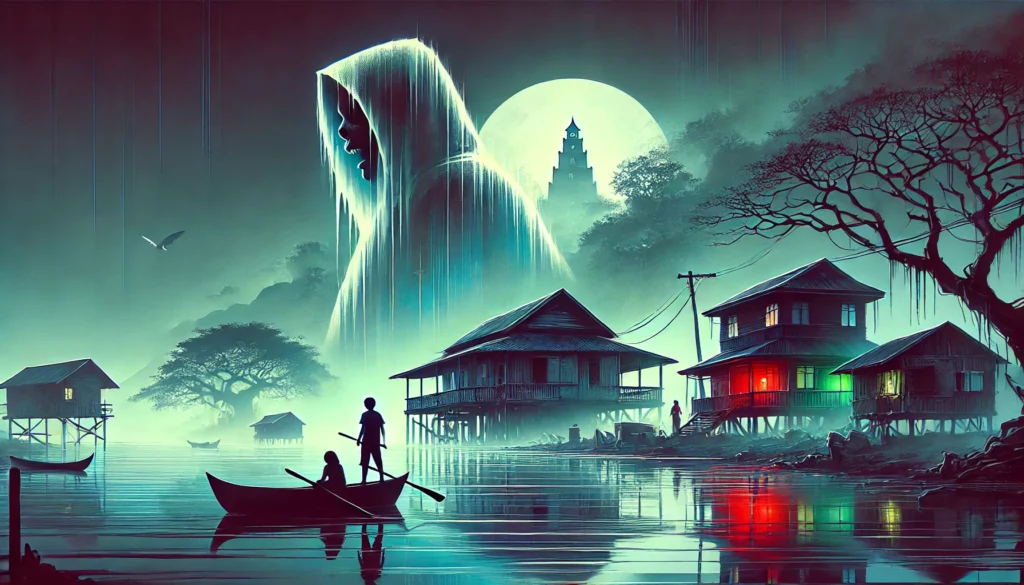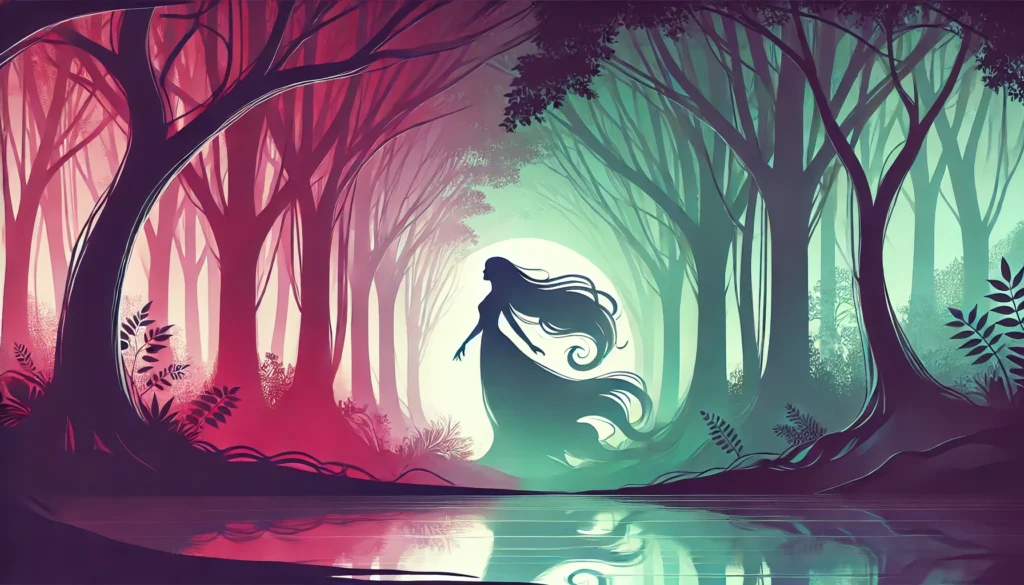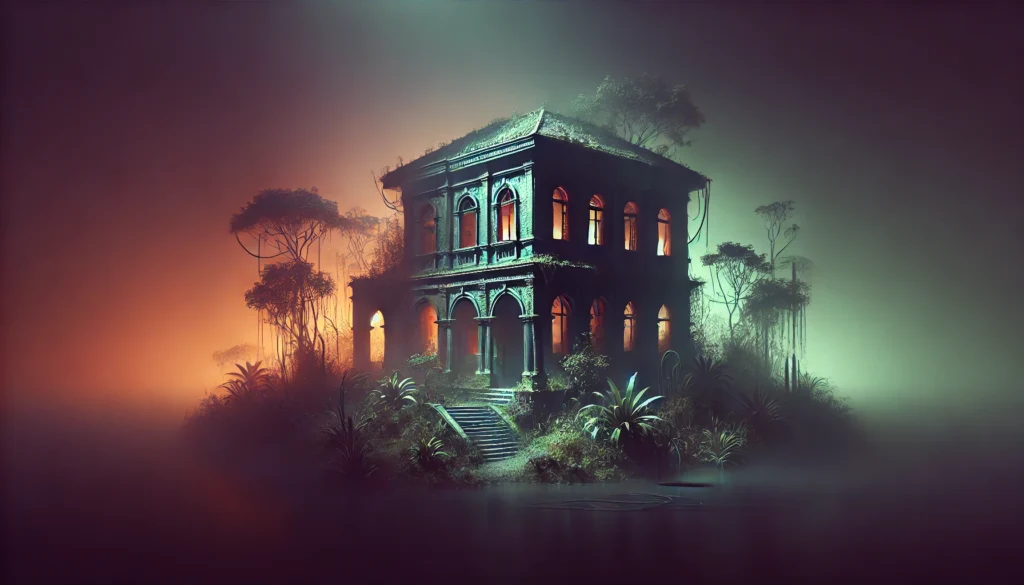Growing up in the Philippines, I’ve always been fascinated by the rich tapestry of ghost stories and supernatural beliefs that permeate our culture. From bustling city streets to remote rural villages, it seems that every corner of our archipelago has a spine-tingling tale to tell. These stories aren’t just entertainment; they’re an integral part of our national identity, reflecting our history, values, and the unique blend of indigenous, Spanish, and American influences that shape Filipino culture.
In this blog post, I’ll take you on a journey through some of the most chilling and popular ghost stories from the Philippines. We’ll explore the origins of these tales, the various types of supernatural entities that populate our folklore, and the impact these stories have on Filipino society. Whether you’re a skeptic or a true believer, I guarantee that these tales will send shivers down your spine and give you a deeper appreciation for the rich supernatural heritage of the Philippines.
The White Lady: A Ubiquitous Presence on Philippine Roads
The Legend of Balete Drive
One of the most enduring and widespread ghost stories in the Philippines is that of the White Lady. While variations of this legend exist throughout the country, perhaps the most famous incarnation is the White Lady of Balete Drive in Quezon City, Metro Manila.
As the story goes, late-night drivers along this tree-lined street might encounter a woman dressed in a flowing white gown, her long black hair obscuring her face. Some versions of the tale claim she suddenly appears in the backseat of cars, while others describe her standing in the middle of the road, causing drivers to swerve and crash. The origins of this particular White Lady are shrouded in mystery, with some believing she was a victim of a brutal crime, while others claim she died in a car accident on that very road.
White Ladies Across the Philippines
The White Lady phenomenon isn’t limited to Balete Drive. Similar apparitions have been reported across the country, each with its own tragic backstory. In Mindoro, there’s a tale of a White Lady who appears near a bridge, said to be the ghost of a woman who drowned in the river below. In Baguio City, the highland retreat famous for its cool climate and spooky atmosphere, there are multiple White Lady sightings, including one at Teacher’s Camp and another at Loakan Road.
These widespread accounts of White Ladies reflect a common theme in Filipino ghost stories: the lingering presence of those who have died tragically or unjustly. It’s a reminder of our cultural belief in the importance of proper burial rites and the consequences of unresolved earthly matters.
Aswang: The Shape-Shifting Terrors of Philippine Nights
What is an Aswang?
No discussion of Philippine ghost stories would be complete without mentioning the aswang. These terrifying creatures are perhaps the most feared supernatural entities in Filipino folklore. Unlike ghosts, aswangs are typically described as living creatures with extraordinary powers, often able to shape-shift between human and animal forms.
The term “aswang” actually encompasses a variety of creatures, each with its own horrifying characteristics. Some are said to be blood-suckers, preying on unsuspecting victims in the night. Others are believed to be eaters of human flesh, with a particular taste for unborn fetuses. The most common depiction of the aswang is that of a beautiful woman by day who transforms into a hideous, bat-like creature at night.
Regional Variations of the Aswang
While aswang stories are found throughout the Philippines, they are particularly prevalent in the Visayas region, especially in the provinces of Capiz and Antique. Each area has its own unique take on the aswang legend, reflecting local customs and fears. Here’s a table summarizing some regional variations:
| Region | Aswang Type | Characteristics |
|---|---|---|
| Capiz | Manananggal | Upper body separates from lower half to fly and hunt |
| Antique | Dangga | Shape-shifts into a large black dog |
| Pampanga | Mangkukulam | Witch-like creature that uses black magic |
| Iloilo | Undin | Water-dwelling creature that lures victims to their doom |
The persistence of aswang stories in Philippine culture speaks to our deep-rooted fears of the unknown and the importance we place on community vigilance. These tales often serve as cautionary stories, encouraging people to be wary of strangers and to maintain strong family and community bonds as protection against supernatural threats.
The Haunted Schools and Universities of the Philippines
University of the Philippines: A Hotbed of Paranormal Activity
As a student, I’ve always been intrigued by the numerous ghost stories surrounding our educational institutions. The University of the Philippines (UP) system, with its sprawling campuses and rich history, is particularly rife with supernatural tales. The UP Diliman campus in Quezon City is home to several allegedly haunted buildings and areas.
One of the most famous is the Oble Fountain, where the iconic Oblation statue stands. Legend has it that on certain nights, the statue comes to life and walks around the campus. Another hotspot for paranormal activity is the College of Music, where students have reported hearing phantom piano music late at night when the building is supposed to be empty.
Other Haunted Educational Institutions
But UP isn’t the only school with ghostly residents. Here are a few other educational institutions known for their supernatural occurrences:
- Philippine Normal University (PNU): The old PNU building in Manila is said to be haunted by the ghosts of students who died during World War II when the building was used as a Japanese headquarters.
- Ateneo de Manila University: The Ateneo Art Gallery is rumored to be haunted by the spirit of a nun who committed suicide. Visitors have reported feeling a cold presence and seeing unexplained shadows.
- De La Salle University: The St. La Salle Hall, one of the oldest buildings on campus, is believed to be haunted by the ghosts of Japanese soldiers and civilians who died there during World War II.
These school-based ghost stories often reflect the traumatic events of our nation’s history, particularly the horrors of World War II. They serve as a reminder of the past and perhaps a way for younger generations to connect with the experiences of those who came before them.
The Supernatural Side of Philippine History
Malacañang Palace: Ghosts of Presidents Past
Even the seat of political power in the Philippines isn’t immune to ghostly tales. Malacañang Palace, the official residence and principal workplace of the President of the Philippines, is said to be home to several spectral inhabitants. Former presidents, first ladies, and even children have been reported wandering the halls of this historic building.
One of the most frequently sighted ghosts is said to be that of Manuel Quezon, the second president of the Philippines. Staff members have reported seeing his apparition smoking a cigar in his former office. Another common sighting is of a young girl in a white dress, believed to be the daughter of former President Jose P. Laurel, who died at a young age.
Fort Santiago: Echoes of Colonial Oppression
Fort Santiago, a citadel built by Spanish conquistador Miguel López de Legazpi, is another historical site steeped in supernatural lore. This fortress, which served as a prison during both the Spanish colonial period and World War II, is said to be haunted by the spirits of countless prisoners who suffered and died within its walls.
Visitors and staff have reported hearing inexplicable screams, seeing shadowy figures, and feeling sudden drops in temperature. Some claim to have seen the ghost of Dr. Jose Rizal, the Philippine national hero who was imprisoned here before his execution in 1896.
These historical hauntings serve as a powerful reminder of the Philippines’ tumultuous past. They keep our history alive in a visceral way, ensuring that the struggles and sacrifices of our ancestors are not forgotten.
Urban Legends and Modern Ghost Stories
The Robinson’s Galleria Snake Man
While many Philippine ghost stories have roots in ancient folklore or historical events, new urban legends continue to emerge in our modern, urbanized society. One of the most popular urban legends in recent decades is the tale of the “Snake Man” of Robinson’s Galleria, a shopping mall in Metro Manila.
According to the story, which began circulating in the 1990s, the mall was built on the former site of a zoo. When construction began, a giant python escaped and was never found. The legend claims that the son of the mall’s owner was born with a congenital condition that caused him to have a half-human, half-snake appearance. This “Snake Man” is said to live in secret chambers within the mall, occasionally emerging to kidnap shoppers who are never seen again.
While this story has been thoroughly debunked (the mall’s owners have repeatedly denied these claims), it continues to circulate and evolve. This urban legend reflects our modern fears about rapid urbanization and the potential dark secrets hidden within large corporations.
The Ozone Disco Tragedy
Sometimes, real-life tragedies give rise to ghostly legends. Such is the case with the Ozone Disco in Quezon City. In 1996, a fire broke out in this popular nightclub, resulting in the deaths of 162 people. It remains one of the worst fire disasters in Philippine history.
In the years following the tragedy, people living and working near the abandoned building reported hearing disco music and seeing mysterious lights late at night. Some claim to have seen ghostly figures dancing in the ruins. These stories likely stem from the collective trauma of the event and serve as a grim reminder of the importance of safety regulations.
The Role of Media in Popularizing Ghost Stories
Shake, Rattle & Roll: A Horror Anthology Institution
The Philippine entertainment industry has played a significant role in popularizing and perpetuating ghost stories and urban legends. One of the most influential franchises in this regard is “Shake, Rattle & Roll,” a horror anthology film series that began in 1984 and has since become a staple of Filipino pop culture.
Each “Shake, Rattle & Roll” film typically features three separate stories, often drawing inspiration from traditional Filipino folklore and urban legends. The series has tackled everything from aswangs and white ladies to more modern fears like killer dolls and haunted technologies. By bringing these stories to the big screen, “Shake, Rattle & Roll” has not only entertained generations of Filipinos but also helped to keep these supernatural tales alive in the public consciousness.
Television Shows and Documentaries
In addition to films, television has played a crucial role in spreading ghost stories. Shows like “Magandang Gabi, Bayan” and “Kakabakaba” in the 1990s and early 2000s featured segments on supernatural encounters and unexplained phenomena, often presented in a documentary-style format that lent credibility to the stories.
More recently, programs like “Kapuso Mo, Jessica Soho” and “Rated K” have continued this tradition, dedicating segments to investigating haunted locations and interviewing people who claim to have had supernatural experiences. These shows have helped to bring local ghost stories to a national audience, often sparking renewed interest in lesser-known legends.
The Psychology Behind Ghost Stories
Cultural Beliefs and Superstitions
As a Filipino, I’ve always been fascinated by how deeply ingrained supernatural beliefs are in our culture. Even in our modern, technologically advanced society, many Filipinos still hold onto traditional beliefs about ghosts, spirits, and otherworldly entities. But why do these stories persist, and what purpose do they serve?
One explanation is that ghost stories and supernatural beliefs help us make sense of the unknown and cope with the fear of death. In a country that has faced numerous natural disasters, political upheavals, and economic challenges, these stories might provide a sense of continuity and connection to our ancestors and our past.
The Social Function of Ghost Stories
Ghost stories also serve important social functions. They can be used to reinforce moral values (like the importance of respecting the dead or the consequences of immoral behavior), strengthen community bonds (through shared storytelling experiences), and even as a form of social control (warning children not to stay out late, for example).
Here’s a table summarizing some of the potential psychological and social functions of ghost stories in Philippine culture:
| Function | Description | Example |
|---|---|---|
| Coping Mechanism | Helps deal with fear of death and unknown | Belief in an afterlife or spiritual realm |
| Moral Instruction | Reinforces cultural values and norms | Stories of aswangs targeting immoral individuals |
| Social Bonding | Strengthens community through shared experiences | Ghost story sessions during brownouts |
| Historical Memory | Keeps historical events and figures in public consciousness | Hauntings related to World War II |
| Environmental Awareness | Encourages respect for nature | Stories of nature spirits punishing those who harm the environment |
The Enduring Power of Philippine Ghost Stories
As we’ve explored in this blog post, ghost stories are more than just entertainment in the Philippines – they’re an integral part of our cultural fabric. From the White Ladies that haunt our roads to the aswangs that prowl our nights, from the specters of our historical sites to the urban legends of our cities, these tales reflect our fears, our values, and our history.
While skeptics might dismiss these stories as mere superstition, their enduring popularity speaks to their power and significance in Filipino culture. Whether you believe in ghosts or not, these stories provide a unique window into the Philippine psyche, offering insights into how we view the world, how we cope with tragedy and uncertainty, and how we maintain connections with our past.
As we continue to modernize and globalize, it’s likely that new ghost stories and urban legends will emerge, adapting to our changing fears and experiences. Yet, the classic tales – the aswangs, the white ladies, the historical hauntings – are likely to persist, passed down from generation to generation, continuing to send shivers down our spines for years to come.
So the next time you find yourself on a dark road late at night, or alone in an old building, remember – in the Philippines, you’re never truly alone. There might just be a ghostly tale waiting to unfold.
Disclaimer: This blog post is based on folklore, urban legends, and reported experiences. It is not intended to make claims about the existence of supernatural phenomena. The stories presented here are part of Philippine cultural heritage and should be respected as such. If you notice any inaccuracies in the historical or cultural information presented, please report them so we can correct them promptly.




